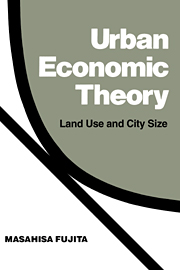6 - Local public goods
Published online by Cambridge University Press: 23 December 2009
Summary
Introduction
Starting in this chapter, we introduce various kinds of urban externalities and extend the basic theory of Part I. First, we introduce public goods and discuss how to achieve the efficient provision of public goods among cities or within a city.
Public goods are, in short, those goods whose benefits are realized mainly in the form of externalities, and hence they are collectively consumed by a large number of individuals. In considering the decentralized mechanisms for the efficient provision of such goods, we find that their spatial characteristics are crucial. Therefore, in this chapter we focus on the spatial dimension of public goods and categorize them as in Figure 6.1. If the service level of a public good is virtually constant over a nation, we call it a national good (e.g., national defense). If, in contrast, the benefits of a public good are confined within a city (within a neighborhood), and its service level is invariant within a city (within a neighborhood), we call it a city good (neighborhood good). If the benefits of a public good are confined within a city but vary among neighborhoods in the city, we call it a superneighborhood good (e.g., a large green park or a museum). As a group, city, neighborhood, and superneighborhood goods are referred to as local public goods.
As has been shown by Samuelson (1954), it is extremely difficult to achieve the efficient provision of national goods by any decentralized market-type mechanism.
- Type
- Chapter
- Information
- Urban Economic TheoryLand Use and City Size, pp. 177 - 225Publisher: Cambridge University PressPrint publication year: 1989



